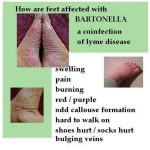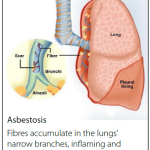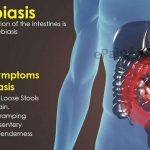
Persistent inflammation and thickening of eyelid margin may indicate squamous cell, basal cell, or sebaceous cell carcinoma masquerading as “blepharitis”. These carcinomas may also mimic styes or chalazions.

Blood cultures: lysis-centrifugation (Isolator) cultures plated on blood or chocolate agar, incubated at 35-37°C in 5% C02 > 2 weeks; enriched broth media, e.g. BACTER, incubated at 35-37°C in 5% C02 >2 weeks and subculture to agar if bacilli detected by periodic acridine orange staining. Avoid contact with potential vectors, especially young cats.

Several other drugs have been evaluated, including tetracycline, primaquine, sulfadiazine (Microsulfon) and pyrimethamine (Fansidar). Results have varied. Pentamidine (Pentam) has proved to be moderately effective in diminishing symptoms and decreasing parasitemia. Others: High-level parasitemia is more common in asplenic patients.

A chronic non-malignant lung disease caused by inhalation of asbestos, a hazardous dust found in a variety of work places. This disease persists in spite of substantial knowledge about its cause, and effective means of prevention. The disease typically occurs 10-15 years after initial exposure. Asbestosis is a fibrotic interstitial lung disease caused by a cascade of responses to inhaled asbestos fibers.

Amebiasis is caused by the intestinal protozoan, Entamoeba histolytica. Infection results from ingestion of fecally contaminated food, such as garden vegetables or by direct fecal-oral transmission. Most persons are asymptomatic or have minimal diarrheal symptoms. In a few patients, invasive intestinal or extraintestinal (e.g., liver, and less commonly kidney, bladder, male or female genitalia, skin, lung, brain) infection results.